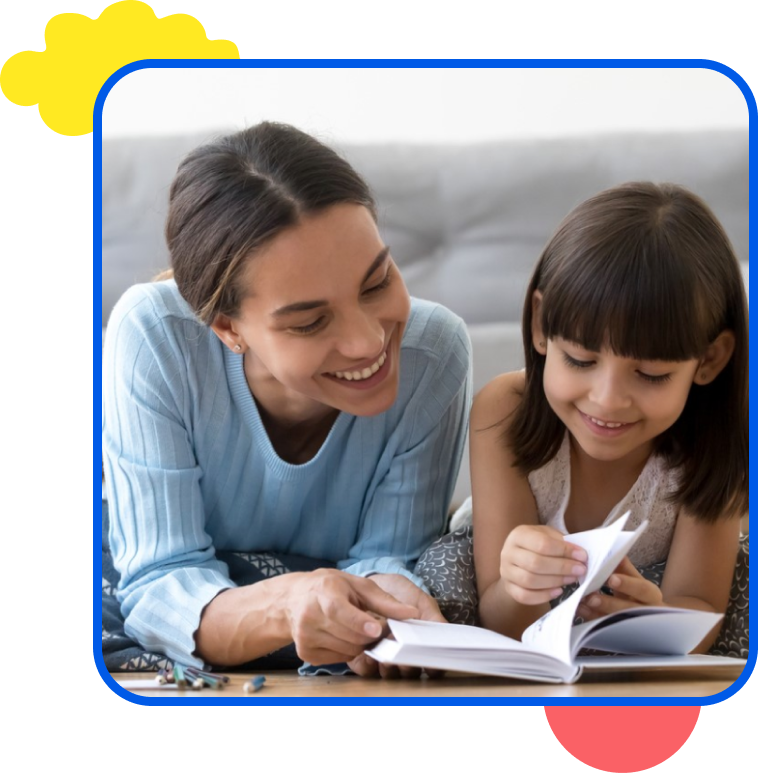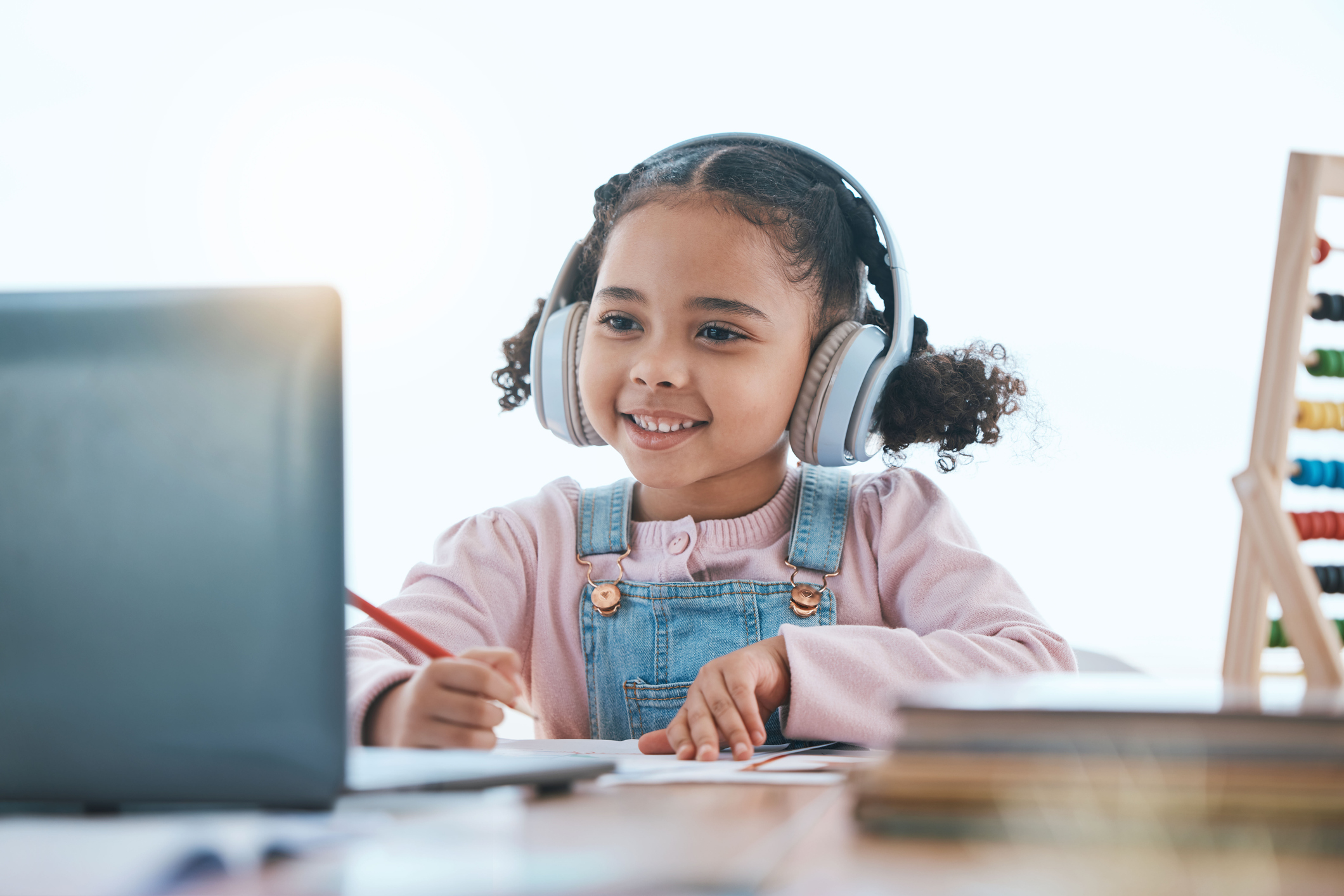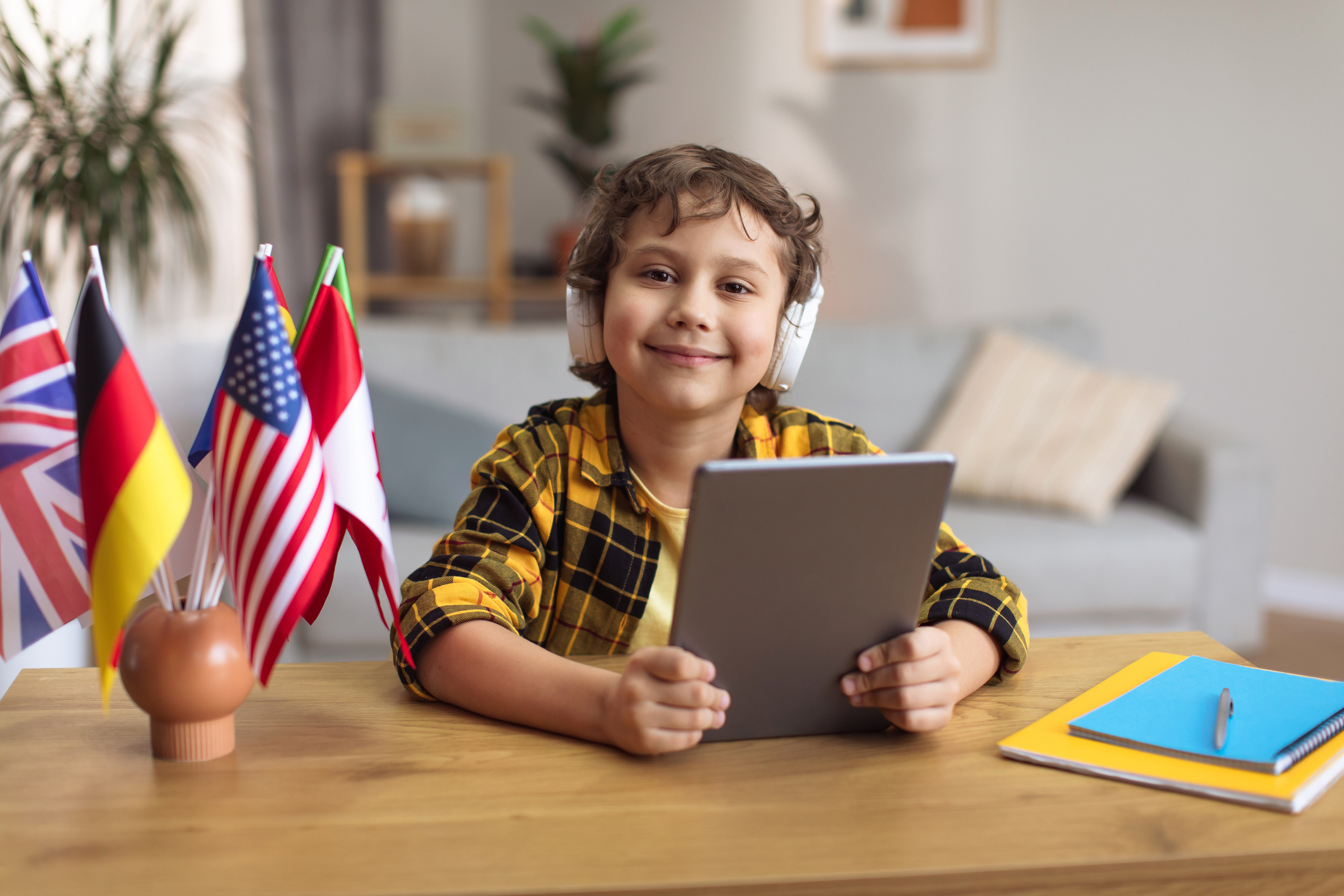Teaching Spanish to Kids: A Guide for Parents



Are you considering teaching Spanish to your kids? Great choice! Learning a second language at an early age can do wonders for a child’s cognitive development. And, with over 460 million native Spanish speakers worldwide, learning Spanish can open up a world of possibilities for your kids!
In this guide, we’ll walk you through some fantastic strategies and tips to make teaching Spanish to kids fun, engaging, and effective. Here’s an overview of what we’ll cover:
- How to structure lessons to teach kids Spanish at home
- The benefits of learning Spanish for kids
- FAQs about teaching Spanish to kids at home
- How to get a free online Spanish class for kids
Let’s begin!
How to structure Spanish lessons for kids
Structuring Spanish lessons for kids requires careful planning and consideration of their age, interests, and learning abilities. Here are some practice tips to help you create effective and engaging Spanish lessons for your kids.
1. Assess your child’s language level
Before starting, assess your child’s current language level in Spanish. This will help you tailor the lessons to their specific needs and abilities. You can test their level by engaging in simple conversations with them in Spanish. Ask them basic questions and see how well they can respond. Pay attention to their vocabulary, pronunciation, and comprehension.
2. Start with basic greetings and expressions.
Begin the lessons with common Spanish greetings and expressions like “Hola” (hello), “Adiós” (goodbye), “Por favor” (please), and “Gracias” (thank you). These are essential building blocks for communication and will make your child feel confident in their first interactions.
3. Introduce new vocabulary words through themes
Structure the lessons around fun and relatable themes, such as colors, numbers, animals, family, food, and daily activities. This approach makes learning more engaging and practical for kids. To get started, check out these easy Spanish words for kids!
4. Use visual aids and flashcards
Visual aids, including colorful flashcards and posters, are excellent tools to reinforce vocabulary and concepts. Show pictures of objects and associate them with their Spanish names. To maximize the retention of vocabulary words, try using the spaced repetition technique.
5. Incorporate storytelling and role-playing
Engage your kids’ imagination by incorporating storytelling and role-playing. Create simple stories or scenarios where they can practice using new words and phrases in context. This activity will also help them develop their creativity and confidence in speaking Spanish.
6. Sing Spanish songs and play language games
Music and games are effective ways to enhance language learning. Sing Spanish songs together and play language-based games like memory matching or “Simon Says” using Spanish commands. Your kids Spanish will skyrocket as they have a blast!
7. Practice speaking and listening regularly
If you truly want your child to become bilingual, you must encourage them to speak Spanish during the lessons. For example, you can have them engage in simple conversations, ask questions, and explain what they see in an image. These conversational activities are the key to building their speaking and listening skills.
8. Provide hands-on activities
Hands-on activities like arts and crafts, cooking, or building projects related to the lesson’s theme can also make learning interactive and memorable. For example, you and your child could prepare simple Spanish recipes, like the “tortilla española” (Spanish omelet). As you cook, practice naming the ingredients and steps in Spanish.
9. Use interactive language learning apps
Language learning apps often include interactive exercises, quizzes, and games that reinforce vocabulary and grammar. Although these apps do not provide enough one-on-one interaction like a human teacher, they can supplement your child’s language learning journey.
10. Encourage daily practice
Consistency is crucial to language learning success. Encourage your kids to practice Spanish a little bit each day to supplement lessons. For students at LingoCircle, we’ve found that at least one 45-minute class per week is the minimum to make significant progress in language learning.
11. Celebrate progress
Positive reinforcement and encouragement will keep your child motivated and excited to continue learning. Celebrate your child’s language learning milestones and accomplishments by throwing a small celebration, praising their efforts, or rewarding them with a special treat.
12. Be patient and have fun
Language learning is a gradual process, so be patient and supportive. Remember, the goal is to make Spanish lessons enjoyable and meaningful for your kids. Using a structured yet flexible approach, you can nurture their love for learning and help them build a strong foundation in Spanish.
The benefits of learning Spanish for kids
Raising your bilingual children comes with a myriad of benefits that go beyond just learning a new language! By teaching your kids Spanish, they’ll also enjoy the following benefits.
Cognitive development
Learning a second language enhances brain development, memory retention, and problem-solving abilities, giving their little brains a powerful workout. According to research, bilingual children have improved cognitive flexibility, which means they can easily switch between tasks and adapt to new situations. This cognitive advantage can extend to other areas of learning, helping them excel in various subjects.
Cultural understanding and appreciation
Learning Spanish introduces your children to the rich and diverse cultures of the Spanish-speaking world. They’ll develop a deeper appreciation for art, music, literature, and traditions, fostering a sense of cultural awareness and respect for global diversity.
Communication skills
As your kids learn Spanish, they become better communicators overall. They gain a deeper understanding of language and communication, positively impacting their listening, speaking, reading, and writing skills in Spanish and their native language.
Career opportunities
In our interconnected world, being bilingual is a valuable skill in the job market. Fluency in Spanish can open doors to exciting career opportunities, especially in industries like international business, tourism, education, and diplomacy.
Building confidence
As your kids progress in their Spanish language journey, they’ll gain confidence in their abilities to communicate in a foreign language. This newfound confidence can extend to other areas of their lives, empowering them to take on challenges with enthusiasm and self-assurance.
Social skills and friendships
Learning Spanish can facilitate new friendships with bilingual peers and native Spanish speakers. The ability to converse in different languages can bridge cultural gaps and create strong connections with people from various backgrounds.
Appreciation for language learning
Starting language learning at a young age paves the way for a lifetime of multilingual skills. Learning Spanish as a child provides a solid foundation for exploring other languages in the future, making it easier for them to learn additional languages later on.
Frequently asked questions about teaching Spanish to kids
As parents, you might have some questions and concerns about teaching Spanish to your kids. Don’t worry; we’ve got you covered! Here are some FAQs about teaching kids Spanish.
1. What is the best age to start teaching Spanish to kids?
There’s no specific age to start teaching Spanish, but the earlier, the better! Kids have a remarkable ability to absorb language, so introducing them to Spanish as young as preschool age can be beneficial and help them take advantage of what’s known as the critical period for language acquisition.
2. Will learning Spanish confuse my child with their native language?
No, learning Spanish will not confuse your child with their native language. Bilingual children often have enhanced cognitive skills and excel in language development. In fact, learning Spanish can reinforce their grasp of language in general.
3. How can I keep my child engaged while learning Spanish?
Making the learning process fun and engaging is key! Use multimedia resources, such as Spanish TV shows for kids and language learning apps. You can also celebrate cultural events and embrace traditions to pique their interest.
4. How can I identify my child’s learning style for effective teaching?
Observe how your child responds to different activities. Do they prefer visual aids, enjoy listening to songs, or are they more hands-on? Tailor your teaching methods to suit their learning style.
5. Can I teach Spanish to my child if I’m not a native speaker?
Absolutely! You don’t need to be a native Spanish speaker to teach your child. There are plenty of resources available, including books, apps, and online courses, designed for non-native speakers teaching Spanish to kids.
However, consider enrolling your child in Spanish classes led by a native-speaking Spanish teacher to ensure they receive proper pronunciation and authentic language exposure. Native-speaking teachers can also offer cultural insights and nuances that may not be readily available to non-native speakers.
6. How can I integrate Spanish learning into our daily routine?
There are tons of ways to foster Spanish immersion at home! Try incorporating Spanish into daily activities like mealtimes, playtime, and bedtime. Other effective methods include labeling household items in Spanish, singing Spanish songs in the car, and using Spanish phrases during conversations.
7. How can I help my child practice speaking Spanish with native speakers?
This can be challenging if you don’t live in a community with many native Spanish speakers. Still, it’s not impossible! You can organize playdates with other kids who speak Spanish or find virtual language exchange programs. Additionally, consider enrolling your child in online language classes for kids where they can interact with native-speaking teachers.
8. What if my child resists learning Spanish?
Patience is key! If your child shows resistance, introduce the language gradually and in a fun way. Offer praise and rewards for their efforts, and demonstrate your enthusiasm for learning Spanish together.
How to get a free Spanish class for kids
Teaching Spanish to your kids is a wonderful journey that fosters language development, cultural understanding, and a love for learning. We hope the information we’ve shared here makes it easy for you to teach your kids Spanish at home!
However, if you need more help, consider online Spanish classes for kids with LingoCircle! We offer classes for kids ages 3-15. Our certified teachers design each class to be engaging and interactive, so your child can learn Spanish while having fun with a small group of peers!Want to see for yourself? Click here to get the first lesson for free!
Related links:


Simple Ways to Learn a Second Language at Home
Get resources and tips to help supplement your bilingual education journey at home.
By providing your email you are signing up to receive emails from Bilingual Bebe. Privacy Policy







